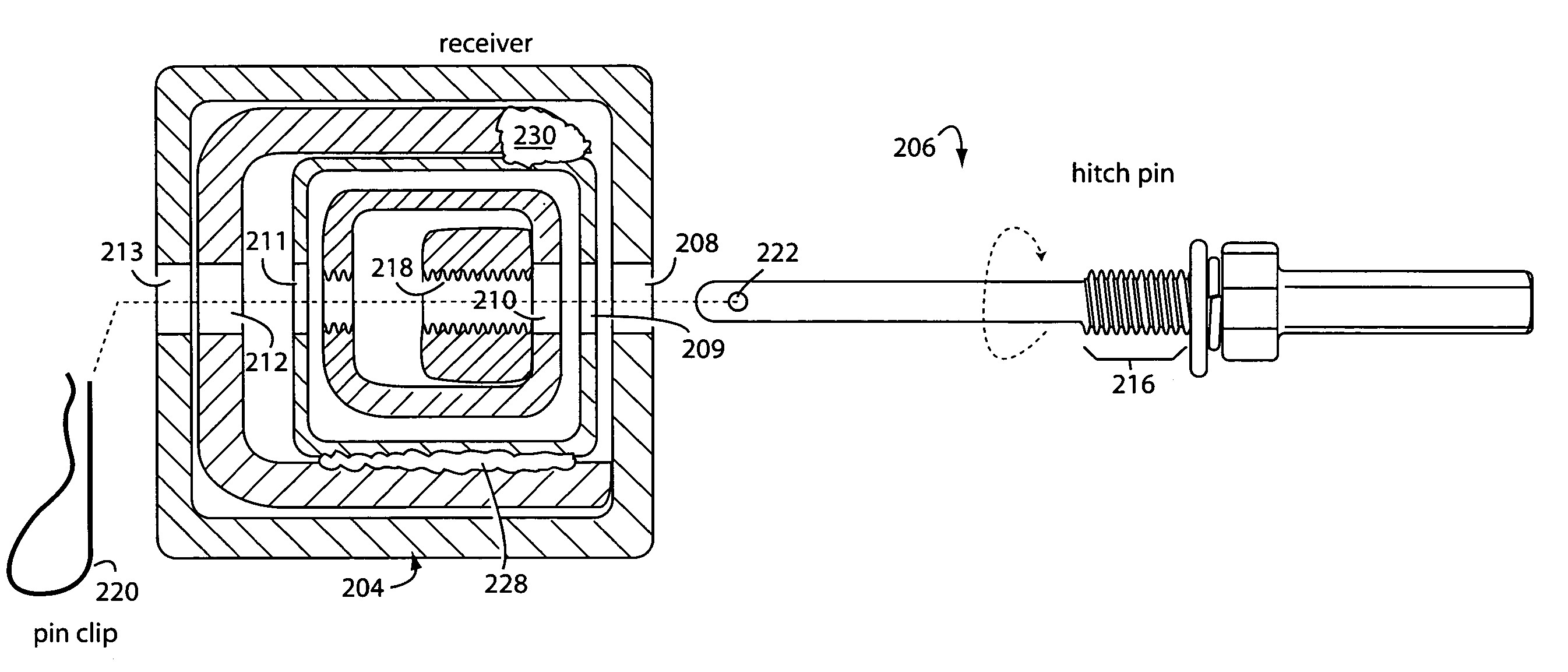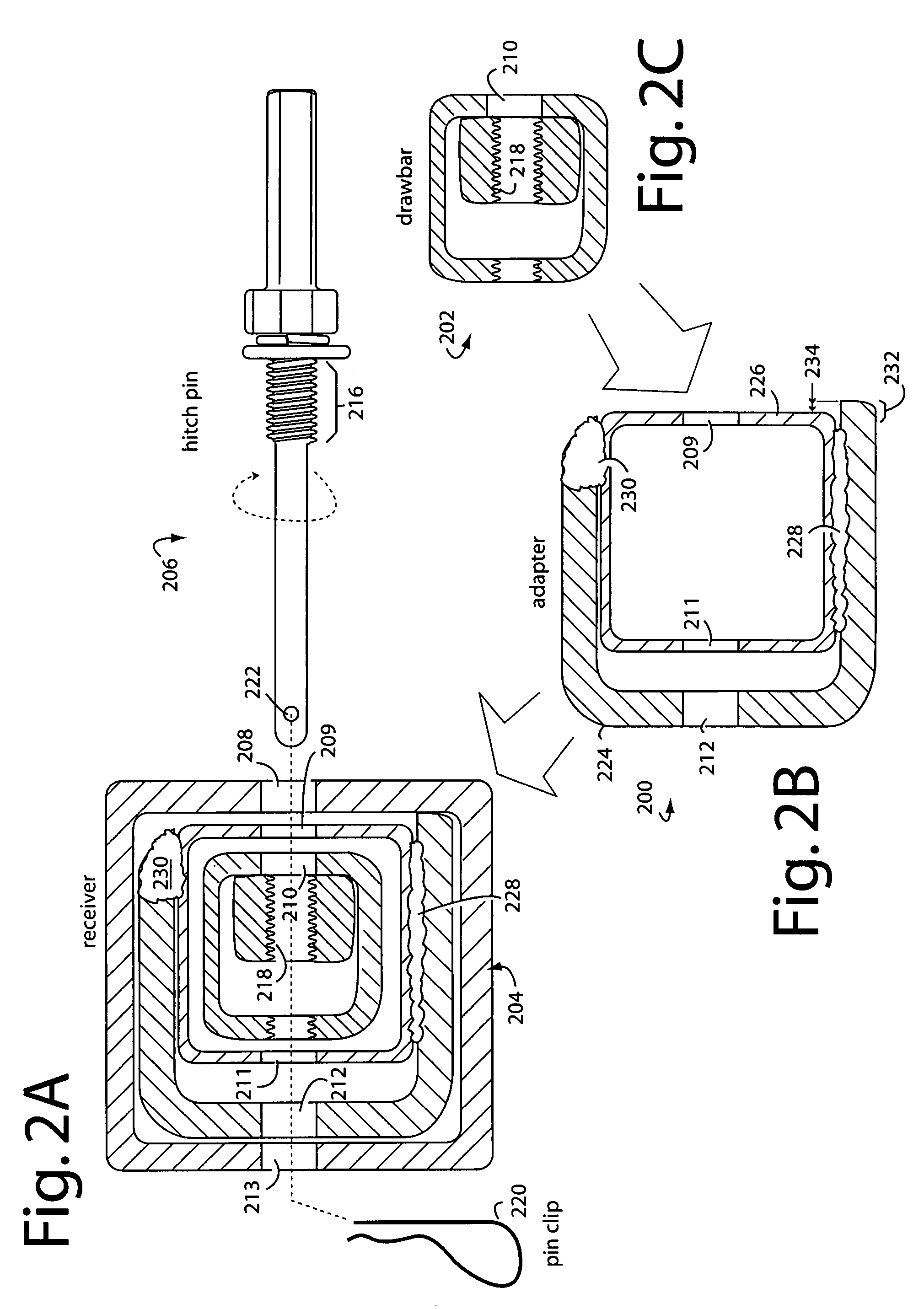Cam action tightening receiver hitch assembly
a receiver and hitch technology, applied in the field of adapters, can solve the problems of equipment being carried to repeatedly bang into the vehicle, damage the vehicle or the equipment being carried, and tools and skills not available, so as to eliminate wobble and rattle, reduce labor intensity, and reduce labor intensity.
- Summary
- Abstract
- Description
- Claims
- Application Information
AI Technical Summary
Benefits of technology
Problems solved by technology
Method used
Image
Examples
Embodiment Construction
[0016]FIG. 1 represents a hitch adapter embodiment of the present invention, and is referred to herein by the general reference numeral 100. The hitch adapter 100 allows a Class-II 1.25″ drawbar to be secured within a Class-III 2″ receiver. It comprises a U-channel 102 of mild steel 0.25″ thick and typically formed with outside cross-section of just under 2″ square and a length of 4.5″. The U-channel 102 is welded to an inner square tube 104 by short welds represented by welds 106 and 108. Importantly, a longer leg 110 of U-channel 102 is formed and welded such that it protrudes about 0.0675″ along its longitudinal length past the adjacent outside corner of inner square tube 104. This detail is shown more fully in FIG. 2.
[0017]The most common receiver pins are ½″ and ⅝″ in diameter. Class-II receiver hitches have 1¼″ receptacles and use ½″ pins. Class-III and Class-IV receiver hitches have 2″ receptacles and use ⅝″ pins.
[0018]A hitch pin 112, or other type fastener capable of snuggi...
PUM
 Login to View More
Login to View More Abstract
Description
Claims
Application Information
 Login to View More
Login to View More - R&D
- Intellectual Property
- Life Sciences
- Materials
- Tech Scout
- Unparalleled Data Quality
- Higher Quality Content
- 60% Fewer Hallucinations
Browse by: Latest US Patents, China's latest patents, Technical Efficacy Thesaurus, Application Domain, Technology Topic, Popular Technical Reports.
© 2025 PatSnap. All rights reserved.Legal|Privacy policy|Modern Slavery Act Transparency Statement|Sitemap|About US| Contact US: help@patsnap.com



